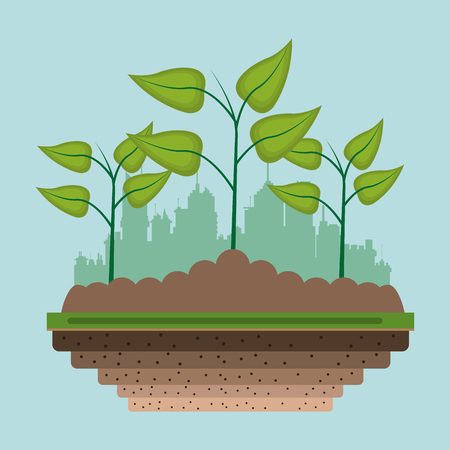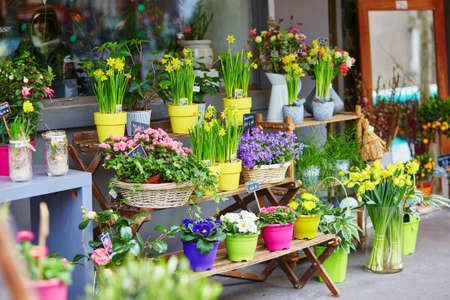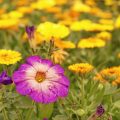1. Choosing the Right Annuals for Your Region
When it comes to growing annual flowers in the U.S., one of the most important steps is choosing varieties that are well-suited for your specific region. The United States has a wide range of climates—from hot and humid in the South to cool and dry in the Northwest—so what thrives in Florida might not do well in Montana. To make sure your annuals bloom beautifully all season long, you’ll want to consider your USDA hardiness zone, local climate conditions, and soil type.
Understanding USDA Hardiness Zones
The USDA Plant Hardiness Zone Map divides North America into 13 zones based on average annual minimum winter temperatures. While annuals dont need to survive winter, these zones help you understand the length of your growing season and when its safe to plant.
USDA Zones and Their Characteristics
| Zone | Typical Climate | Suggested Annual Flowers |
|---|---|---|
| Zones 3-5 | Cool to cold; short growing season | Pansies, snapdragons, calendula, alyssum |
| Zones 6-7 | Mild winters; moderate growing season | Zinnias, marigolds, cosmos, petunias |
| Zones 8-9 | Warm; long growing season | Impatiens, salvia, vinca, cleome |
| Zones 10-11 | Tropical/subtropical; year-round growth possible | Torenia, begonias, coleus, portulaca |
Consider Your Regional Climate Conditions
Apart from hardiness zones, regional weather plays a big role in flower performance. Humidity levels, rainfall patterns, and temperature extremes all impact how well your annuals grow. For example:
- Southeast: Choose heat- and humidity-tolerant flowers like vinca or marigold.
- Southwest: Go for drought-resistant picks like gazania or California poppies.
- Northeast: Look for fast-growing options that thrive in cooler temps such as lobelia or nasturtiums.
- Midwest: Opt for hardy blooms like sunflowers and zinnias that can handle sudden weather shifts.
- Pacific Northwest: Favor moisture-loving plants like fuchsia or impatiens due to frequent rain.
Know Your Soil Type
Your soils texture and nutrient content also affect which flowers will flourish. Before planting, test your soil pH and drainage. Here are a few suggestions based on common soil types:
| Soil Type | Description | Recommended Annuals |
|---|---|---|
| Sandy Soil | Drains quickly but may lack nutrients | Zinnias, cosmos, portulaca |
| Clay Soil | Holds moisture but may compact easily | Marigolds, salvia, cleome |
| Loamy Soil | The ideal mix: well-draining with good nutrients | Most annuals including petunias, begonias, impatiens |
Pro Tips for Selecting the Best Annuals
- Check seed packets or plant tags: They often indicate the best zones and conditions for each plant.
- Visit local nurseries: Plants sold locally are usually selected with your region’s needs in mind.
- Mix sun-lovers and shade-tolerant varieties: Match them to different areas of your garden for best results.
- Diversify bloom times: Choose early-, mid-, and late-season bloomers to enjoy flowers all summer long.
Selecting the right annuals tailored to your region’s unique environment sets the foundation for a vibrant and thriving flower garden throughout the growing season.
2. How to Prep Your Garden for Annual Planting
Getting your garden ready for annual flowers is a crucial step in making sure they grow strong and bloom beautifully throughout the season. Whether youre planting zinnias in Texas or pansies in Oregon, proper preparation will give your annuals the best chance to thrive.
Step 1: Choose the Right Garden Location
Annual flowers love sunlight, but different types have different needs. Most annuals need at least 6–8 hours of full sun each day, so pick a spot that gets plenty of light. If you’re growing shade-loving varieties like impatiens or begonias, aim for a location with morning sun and afternoon shade.
Tips for Choosing the Best Spot:
- Full Sun Lovers: Marigolds, petunias, zinnias
- Partial Shade Favorites: Lobelia, coleus
- Shade Tolerant Options: Impatiens, caladiums
Step 2: Test and Prepare Your Soil
Healthy soil is the foundation of any successful flower bed. You can test your soil using a simple DIY kit from any garden center or county extension office. The ideal pH for most annual flowers is between 6.0 and 7.0.
Soil Preparation Steps:
- Clear the Area: Remove weeds, rocks, and old plant material.
- Till the Soil: Use a shovel or garden fork to loosen the top 8–12 inches of soil.
- Add Organic Matter: Mix in compost or well-rotted manure to boost nutrients and improve texture.
- Level the Surface: Rake the area flat to prepare for planting.
Step 3: Improve Drainage and Fertility
Poor drainage can lead to root rot, especially in wetter regions like the Pacific Northwest. Use these strategies to create well-drained yet nutrient-rich soil beds that your annuals will love.
Common Soil Issues & Fixes
| Problem | Solution |
|---|---|
| Sandy Soil (Too Dry) | Add compost or peat moss to retain moisture and nutrients. |
| Clay Soil (Too Wet) | Add coarse sand, compost, and gypsum to improve drainage. |
| Nutrient Deficient | Add balanced fertilizer (10-10-10) before planting. |
| Poor Drainage | Create raised beds or mix in perlite or gravel for better water flow. |
Step 4: Set Up for Regional Success
The U.S. spans multiple climate zones, so tailoring your prep work by region can make a big difference. Here’s a quick look at some regional considerations:
Regional Tips Table
| Region | Key Consideration |
|---|---|
| Northeast | Wait until after last frost; enrich soil with compost after long winters. |
| Southeast | Avoid overly rich soils; focus on good drainage due to heavy rains. |
| Midwest | Add mulch to conserve moisture during hot summers; test pH regularly. |
| Southwest | Irrigation is key; add organic matter to sandy desert soils. |
| Pacific Northwest | Avoid waterlogging; raise beds and amend with sand if needed. |
Step 5: Mulch Smartly After Planting
A thin layer of mulch (about 1–2 inches) helps keep weeds down and retains moisture around your plants’ roots. Use organic options like shredded bark, straw, or even pine needles depending on whats locally available in your area.
A little planning goes a long way when it comes to prepping your garden for annual flowers. With healthy soil, good drainage, and the right spot picked out, you’ll be set up for a colorful growing season no matter where you live in the U.S.

3. Planting and Caring for Annual Flowers
Once youve chosen the perfect annuals for your region, its time to get them in the ground and help them thrive. Whether youre sowing seeds directly or transplanting young plants, a few simple steps will set you up for success.
Sowing Seeds vs. Transplanting
Annual flowers can be started from seeds or purchased as young plants (transplants). Each method has its pros and cons:
| Method | Pros | Cons |
|---|---|---|
| Direct Sowing | Budget-friendly, wide variety of seed options | Longer germination time, more sensitive to weather |
| Transplanting | Faster blooms, easier to space evenly | More expensive, limited varieties at garden centers |
Best Practices for Planting
Soil Preparation
Start by loosening the soil and mixing in compost or organic matter to improve drainage and nutrient content. Most annuals prefer well-drained soil with a neutral pH.
Spacing and Depth
Follow the spacing recommendations on seed packets or plant tags. Overcrowding can lead to poor air circulation and increase the risk of disease.
Timing
Wait until after your areas last frost date before planting warm-season annuals like zinnias or marigolds. In cooler regions, you can start seeds indoors 6–8 weeks before the last frost.
Caring for Your Annual Flowers
Watering
Annuals need consistent moisture, especially right after planting. Water deeply once or twice a week rather than shallow daily watering. Early morning is the best time to water to prevent fungal issues.
Fertilizing
A balanced, slow-release fertilizer added at planting time can provide nutrients throughout the season. For heavy bloomers like petunias, consider supplementing with liquid fertilizer every couple of weeks.
Deadheading
This simple technique—removing spent blooms—encourages many annuals to produce more flowers instead of going to seed. Use small scissors or pinch with your fingers just above a leaf node.
Tip:
If youre short on time, look for “self-cleaning” varieties that drop their own spent flowers, such as some calibrachoas and impatiens.
Pest and Disease Watch
Keep an eye out for common pests like aphids or spider mites. A strong spray of water or insecticidal soap usually does the trick. Good airflow and not overwatering can help prevent fungal diseases like powdery mildew.
A Little Love Goes a Long Way
With regular care—just a few minutes a week—youll enjoy vibrant blooms all season long. Keep up with watering, feeding, and grooming to make the most of your annual flower garden.
4. Common Pests and Problems—and How to Handle Them
Even the most vibrant annual flower gardens in the U.S. can run into trouble now and then. From pesky insects to unpredictable weather, knowing what to look for and how to respond can save your blooms and keep your garden thriving all season long.
Common Garden Pests
Insects are one of the most frequent threats to annual flowers. While some bugs are beneficial (like ladybugs and bees), others can cause serious damage if left unchecked.
Here’s a quick guide to common pests you might encounter:
| Pest | Signs of Damage | Organic Control Options |
|---|---|---|
| Aphids | Sticky residue, curled leaves | Spray with neem oil or use insecticidal soap |
| Japanese Beetles | Skeletonized leaves, visible beetles | Handpick in early morning; use traps away from flowers |
| Spider Mites | Tiny webs, yellow speckled leaves | Hose off plants; apply insecticidal soap regularly |
| Caterpillars | Chewed foliage and buds | Use Bacillus thuringiensis (Bt) spray; attract birds |
Diseases That Affect Annual Flowers
Disease issues tend to appear when conditions are too wet or crowded. Fungal infections and bacterial problems can spread quickly among annuals if not addressed promptly.
Watch out for these common diseases:
| Disease | Symptoms | Prevention & Treatment |
|---|---|---|
| Powdery Mildew | White powder on leaves and stems | Improve air circulation; avoid overhead watering; apply sulfur spray if needed |
| Botrytis (Gray Mold) | Mushy gray spots on petals and stems | Remove infected parts; reduce humidity; use fungicide sparingly if necessary |
| Root Rot | Wilting despite wet soil, mushy roots when dug up | Avoid overwatering; ensure well-draining soil and containers with drainage holes |
Weather-Related Challenges by Region
The U.S. has a wide range of climates, which means different regions face unique weather challenges that can impact annual flowers.
A few examples by region:
| Region | Common Weather Issues | Tips to Manage Them |
|---|---|---|
| Northeast & Midwest | Late frosts in spring, heavy summer storms | Use frost cloths in early spring; stake tall plants to prevent storm damage |
| Southeast | High humidity, sudden downpours, fungal pressure | Select mildew-resistant varieties; space plants properly for airflow; mulch to reduce splash-back of spores from soil |
| Southwest & West Coast | Drought conditions, intense sun | Select heat-tolerant varieties like zinnias and marigolds; water early in the day using drip irrigation to conserve moisture |
| Pacific Northwest | Cool, damp conditions | Avoid overcrowding; choose varieties that tolerate cool temps like pansies and snapdragons |
General Prevention Tips for Healthy Annuals
- Inspect Regularly: Check leaves (top and underside) at least once a week for signs of pests or disease.
- Avoid Overwatering: Too much water is a common cause of root rot and fungal growth.
- Add Companion Plants: Flowers like marigolds can deter harmful insects naturally.
- Kickstart Soil Health: Use compost or aged manure to enrich soil and boost plant immunity.
A little attention goes a long way when it comes to pest and problem prevention. With these simple strategies, your annual flower garden will be better equipped to handle whatever nature throws its way!
5. Seasonal Maintenance and Maximizing Bloom Time
Keeping your annual flowers vibrant and blooming from spring through fall requires some regular upkeep. With a little attention to detail and timing, you can enjoy a colorful garden all season long. Below are easy-to-follow tips to help your annuals thrive throughout the growing season.
Pruning and Deadheading
One of the simplest ways to extend bloom time is by deadheading—removing spent flowers. This encourages plants to produce more blooms rather than putting energy into seed production.
Deadheading Tips:
- Use clean, sharp scissors or pruners.
- Snip just above the first set of healthy leaves below the faded flower.
- Do this regularly for plants like petunias, zinnias, marigolds, and cosmos.
Succession Planting
Succession planting means sowing seeds or transplanting new seedlings every few weeks to ensure a continuous display of color. This is especially helpful for fast-blooming annuals that tend to fizzle out mid-season.
Best Annuals for Succession Planting:
| Flower | Sow Every | Notes |
|---|---|---|
| Zinnias | 2-3 weeks | Quick bloomers; great for cutting gardens |
| Cosmos | 3 weeks | Tolerant of heat and drought; self-seeds easily |
| Nasturtiums | 4 weeks | Adds edible color to gardens; attracts pollinators |
Feeding and Watering Wisely
Your annuals need consistent water and nutrients to keep producing flowers. Over- or under-watering can stress plants and reduce blooms.
Quick Care Tips:
- Watering: Aim for deep watering once or twice per week depending on weather and soil type.
- Fertilizing: Use a balanced liquid fertilizer every 2–4 weeks or apply slow-release granules at planting time.
- Avoid overfeeding: Too much nitrogen can lead to lush foliage but fewer flowers.
Pest and Disease Management
A healthy plant is more likely to bloom longer. Watch out for common issues like aphids, powdery mildew, and slugs.
Pest Control Tips:
- Inspect plants weekly for signs of trouble.
- Use insecticidal soap or neem oil if needed.
- Encourage beneficial insects like ladybugs and lacewings.
Extending Color Into Fall
You don’t have to say goodbye to blooms after summer. With proper planning, many annuals will continue flowering well into autumn, especially in warmer USDA zones.
Late-Blooming Favorites:
- Dahlias: Keep blooming until first frost with regular deadheading.
- Ageratum: Compact clusters of blue-purple flowers last late into the season.
- Alyssum: Cool-weather lover that picks up again in fall after a summer lull.
A little seasonal care goes a long way in keeping your annual flower garden looking its best. By following these simple steps, youll enjoy waves of vibrant color from early spring through the first frost.
6. Top Annual Flower Picks by U.S. Region
Choosing the right annual flowers for your region is key to a thriving garden. Climate, soil type, and seasonal weather patterns vary across the United States, so it’s important to select varieties that perform well in your specific area. Below is a helpful guide featuring top-performing and popular annuals recommended for five major U.S. regions: the Northeast, South, Midwest, West Coast, and Mountain areas.
Northeast
The Northeast experiences four distinct seasons with cold winters and humid summers. Choose hardy and adaptable annuals that can thrive in these conditions.
| Flower | Key Features |
|---|---|
| Zinnias | Easy to grow, vibrant colors, attracts pollinators |
| Impatiens | Perfect for shade, blooms all summer long |
| Petunias | Tolerates cooler nights, continuous blooms |
South
The Southern U.S. is known for hot, humid summers and mild winters. Heat-tolerant and drought-resistant annuals are ideal here.
| Flower | Key Features |
|---|---|
| Marigolds | Loves heat, pest-repelling properties |
| Vinca (Periwinkle) | Drought-tolerant, blooms in full sun |
| Lantana | Thrives in heat, attracts butterflies |
Midwest
The Midwest has a wide range of temperatures with hot summers and cold winters. Choose resilient flowers that can adapt to changing weather conditions.
| Flower | Key Features |
|---|---|
| Cosmos | Tolerates poor soil, blooms into fall |
| Snapdragons | Cools-season bloomers, great for early planting |
| Nasturtiums | Edible flowers, easy to grow from seed |
West Coast
The West Coast enjoys a mild climate with wet winters and dry summers. Drought-tolerant and sun-loving plants do particularly well here.
| Flower | Key Features |
|---|---|
| California Poppies | Native flower, low maintenance |
| Alyssum | Scented blooms, excellent ground cover |
| Salvia | Drought-tolerant, attracts hummingbirds |
Mountain Region
This region features cooler temperatures and shorter growing seasons due to higher elevations. Look for cold-hardy and fast-growing annuals.
| Flower | Key Features |
|---|---|
| Pansies | Tolerates frost, early spring color |
| Lobelia | Loves cool weather, trailing habit works well in containers or borders |
| Dianthus (Sweet William) | Fragrant blooms, handles cooler temps well |
Selecting region-appropriate annuals can make all the difference in how successful—and enjoyable—your gardening season will be. Use this guide as a starting point when planning your flower beds or container gardens.


